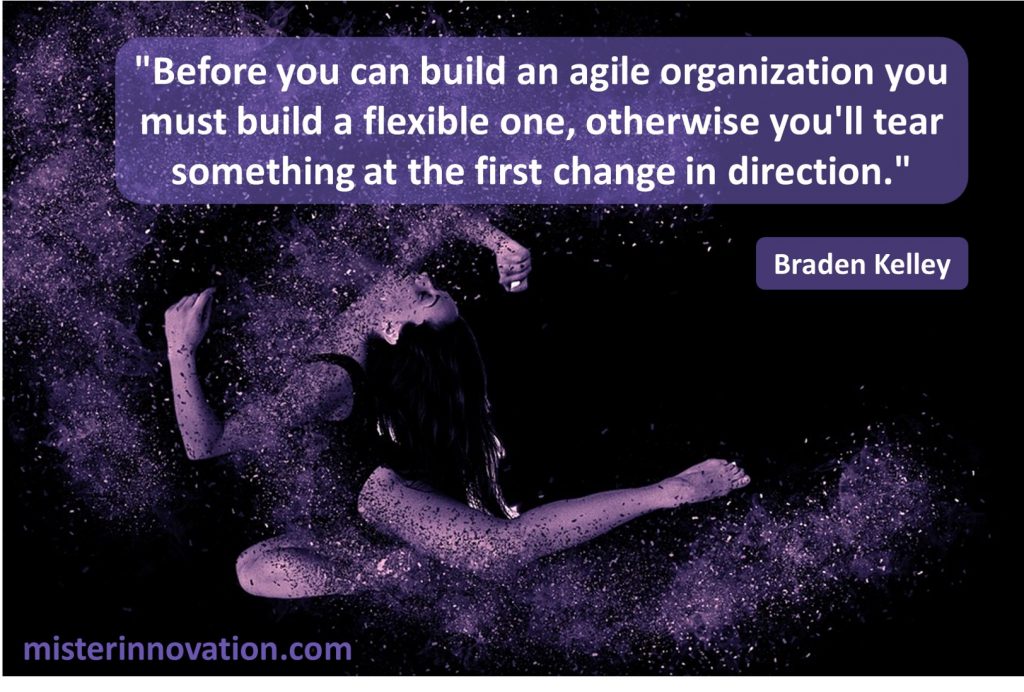A Powerful Combination

GUEST POST from Chateau G Pato
In today’s fast-paced and competitive market, organizations are increasingly realizing the importance of incorporating both Human-Centered Design (HCD) principles and Agile methodologies into their product development processes. By doing so, companies are able to create innovative and user-centric products while staying agile and responding swiftly to changing customer needs.
Human-Centered Design is an iterative design approach that focuses on understanding and meeting the needs, desires, and behaviors of end-users. It involves continuously involving users throughout the design process, gaining insights through user research, and incorporating their feedback to build products that truly address their pain points. On the other hand, Agile methodologies emphasize flexibility, collaboration, and adaptive planning, enabling teams to iteratively deliver value through frequent and incremental product releases.
When combining HCD with Agile, organizations can leverage the strengths of both methodologies and achieve remarkable results. Let’s explore two case studies that highlight the power of this combination.
Case Study 1: Airbnb
One of the most prominent examples of successful integration of HCD and Agile methodologies is Airbnb. In its early years, Airbnb faced the challenge of low user engagement and failed to attract users to their platform. Recognizing the importance of putting users at the center of their design strategy, Airbnb embraced HCD principles alongside an Agile development approach.
Airbnb extensively researched the needs and preferences of its target audience, even going as far as sending its designers to live with hosts in different cities to truly understand the user experience. The insights gained from these immersive research experiences helped Airbnb identify pain points and develop innovative features that addressed them effectively.
By integrating Agile methodologies, Airbnb was able to quickly implement and test its design ideas, gaining rapid feedback from users. They released regular updates and constantly improved their app based on user feedback, ensuring that the product remained user-centric. Today, Airbnb is a global leader in the accommodation industry, revolutionizing the way people experience travel.
Case Study 2: Intuit
Intuit, a leading financial software company, is another example of successfully combining HCD and Agile methodologies in their product development process. Intuit’s flagship product, TurboTax, enables users to file taxes easily and efficiently. However, in observance of a common challenge faced by many organizations, Intuit realized that users often dropped out during the tax filing process due to its complexity.
To address this issue, Intuit adopted an HCD approach. They conducted extensive user research, including in-depth interviews and usability testing, to understand the pain points hindering user adoption. Based on these insights, Intuit redesigned their tax filing process to be simpler, more intuitive, and less time-consuming.
Intuit complemented their HCD efforts with an Agile development methodology. By releasing regular updates and engaging with users throughout the development process, Intuit ensured that the changes made aligned with user needs. The incremental approach allowed them to constantly improve the product and significantly reduce customer drop-offs during tax filing.
The integration of HCD and Agile methods played a crucial role in the success of TurboTax, making it the most popular tax preparation software in the market today.
Conclusion
The combination of Human-Centered Design and Agile methodologies has proven to be a powerful tool for organizations seeking to create user-centric and innovative products. The case studies of Airbnb and Intuit demonstrate how this integration can lead to significant improvements in user experiences and overall business success. By prioritizing user needs and leveraging feedback through an iterative and adaptive approach, companies can adapt to changing market requirements while delivering products that make a lasting impact.
EDITOR’S NOTE: Braden Kelley’s Problem Finding Canvas can be a super useful starting point for doing design thinking or human-centered design.
“The Problem Finding Canvas should help you investigate a handful of areas to explore, choose the one most important to you, extract all of the potential challenges and opportunities and choose one to prioritize.”
Image credit: misterinnovation.com
![]() Sign up here to get Human-Centered Change & Innovation Weekly delivered to your inbox every week.
Sign up here to get Human-Centered Change & Innovation Weekly delivered to your inbox every week.